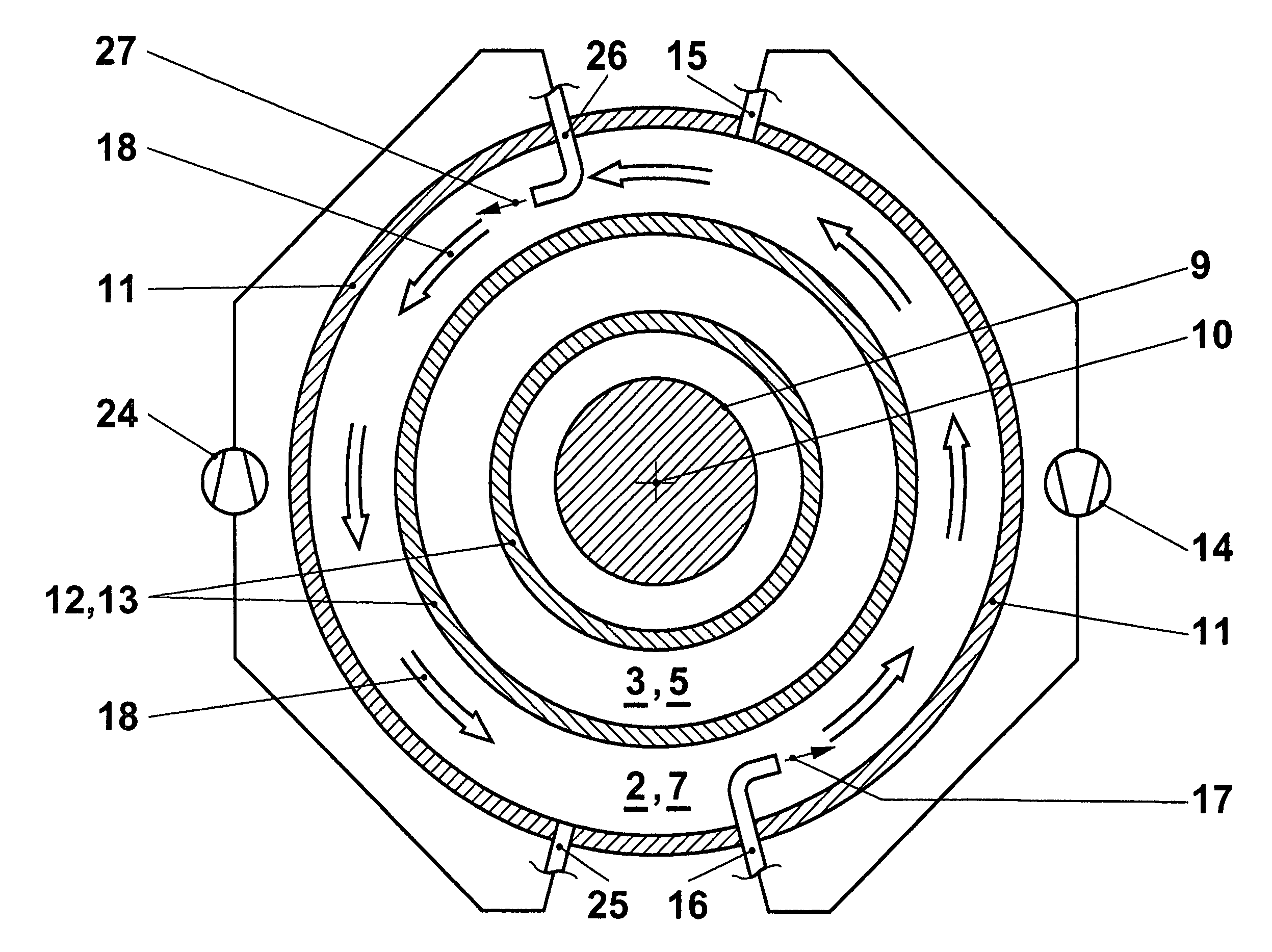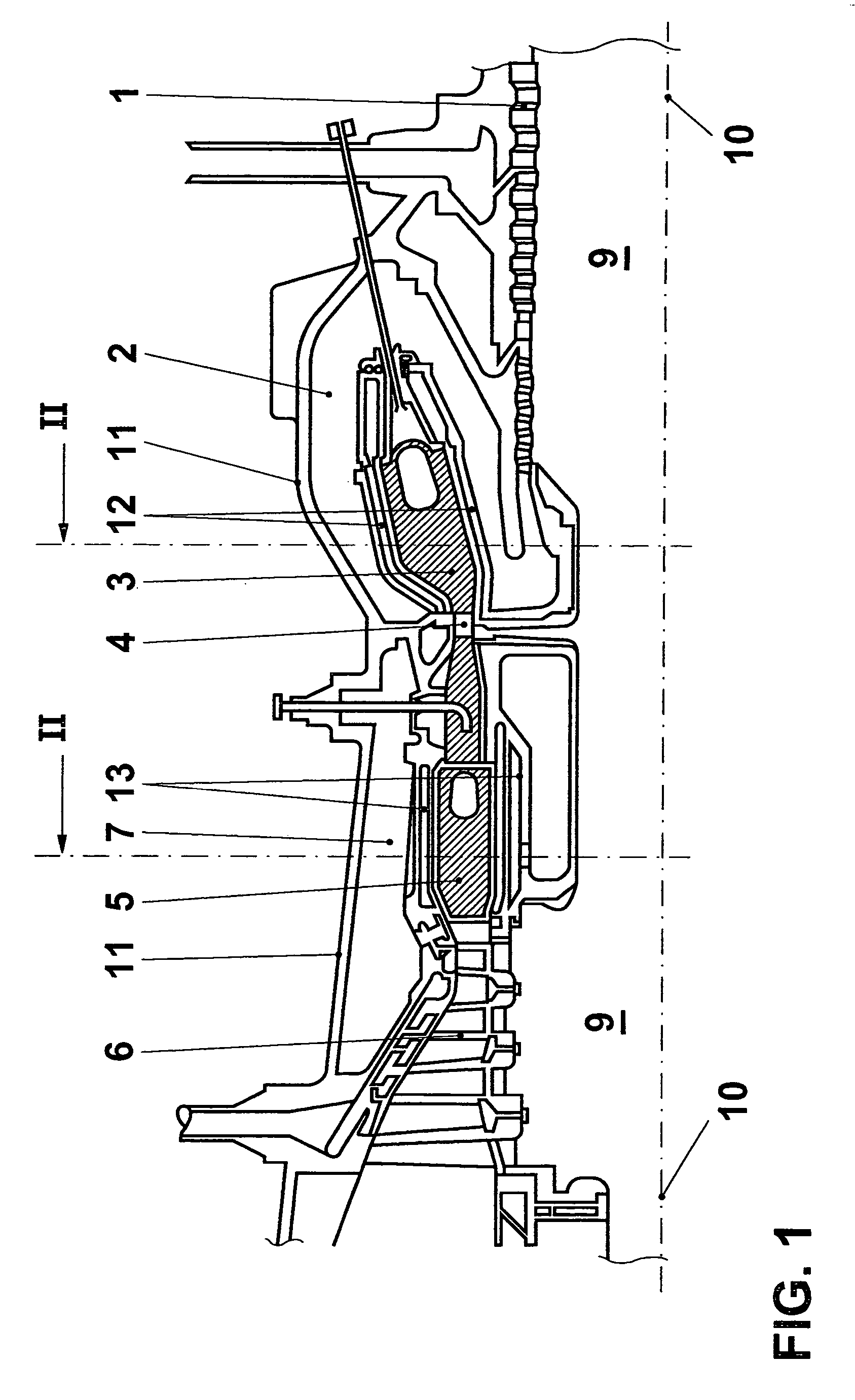Turbomachine
a technology of rotating motors and rotating shafts, which is applied in the direction of machines/engines, mechanical apparatus, liquid fuel engines, etc., can solve the problems of affecting the operation of the engine, so as to avoid the damage of thermal stratification
- Summary
- Abstract
- Description
- Claims
- Application Information
AI Technical Summary
Benefits of technology
Problems solved by technology
Method used
Image
Examples
Embodiment Construction
[0020]The invention is to be explained in the context of a turbomachine. The thermal block of a gas turbine is illustrated in FIG. 1, only the part above the machine axis 10 being shown. The machine shown in FIG. 1 is a gas turbine having “sequential combustion”, as disclosed, for example, by EP 620362. Although its functioning is not of primary significance for the invention, this may be explained in broad outline for the sake of completeness. A compressor 1 draws in an air mass flow and compresses it to a working pressure. The compressed air flows through a plenum 2 into a first combustor 3. A fuel quantity is introduced there and burned in the air. The hot gas produced is partly expanded in a first turbine 4 and flows into a second combustor 5, an “SEV combustor”. The fuel supplied there ignites on account of the still high temperature of the partly expanded hot gas. The reheated hot gas is expanded further in a second turbine 6, in the course of which mechanical output is transm...
PUM
 Login to View More
Login to View More Abstract
Description
Claims
Application Information
 Login to View More
Login to View More - R&D
- Intellectual Property
- Life Sciences
- Materials
- Tech Scout
- Unparalleled Data Quality
- Higher Quality Content
- 60% Fewer Hallucinations
Browse by: Latest US Patents, China's latest patents, Technical Efficacy Thesaurus, Application Domain, Technology Topic, Popular Technical Reports.
© 2025 PatSnap. All rights reserved.Legal|Privacy policy|Modern Slavery Act Transparency Statement|Sitemap|About US| Contact US: help@patsnap.com



